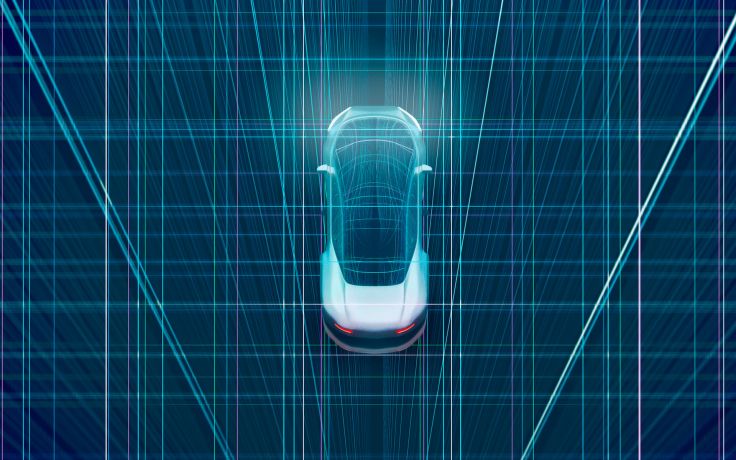How “Minority Report” Predicted the Future of Automotive and The Emergence of Self-driving Cars
- Published
- 5 min reading
The idea of self-driving cars has been around since the very beginning of the millennium. Yet, here we are, more than 20 years later, wondering when the promised autonomous commute is going to arrive. Are we close to fulfilling the vision of Minority Report cars, or do we need more patience? When will self-driving cars be available? Let’s find out.
The idea of fully autonomous cars
In the movie, the main character, John Anderton (played by Tom Cruise), moves around the city in a self-driving car. As innovative and futuristic as this idea was, people started to wonder whether it could really be possible, and if so – how soon we could expect the technology to catch up with the concept.
The idea is pretty simple – the cars drive themselves with no human involvement. But the technology that drives them is far from simple.
Vehicle-to-everything (V2X) communication - the key to self-drivig cars
In order for self-driving cars to become a reality, we first need to ensure that the cars can communicate with their entire surroundings, not just with other cars. Fully autonomous vehicles need to communicate with people, buildings, and other elements of the infrastructure. Vehicle-to-vehicle communication is an important but small part of the whole communication system.
On some levels, this kind of communication is already possible, thanks to the widely available wireless network and the increasing popularity of beacons. Yet, in order to deploy the service and unleash its full potential, it has to get more advanced than this.
There’s also another, bigger issue with driverless cars.

Safety first - the main concerns regarding fully autonomous cars
Waymo CEO believes “building safe driverless cars is harder than rocket science”, and he might just be right. Over the last decade we’ve seen a lot of unsuccessful attempts to introduce self-driving cars.
According to Carsurance, self-driving cars have an average of 9.1 accidents per million miles driven, compared to 4.1 crashes per million miles for regular vehicles. Trust in autonomous cars is not that great either, with over half of Americans saying that they wouldn’t feel safe in a driverless vehicle.
The development of self-driving cars cannot be stopped
Even though safety concerns are valid and need to be addressed before we start driving from the back seat, the future commute will be autonomous, whether we like it or not. Aside from fully driverless cars, we’ve seen companies working on more and more features that allow assisted, semi-autonomous rides.
These advanced driver-assistance systems (ADAS) use automated AI-powered solutions and tools, such as sensors and cameras, to detect obstacles and driver errors and respond accordingly in a timely manner. Most of us have actually used (and loved!) some of these features by now.
The fact that companies are already introducing some kind of automation to their latest car models made the American SEA (Society of Automotive Engineers) come up with a six-level scale for car automation.

Network slicing as the catalyst
An additional catalyst for the development of fully autonomous Minority Report-like cars is network slicing. Thanks to 5G, we can finally start implementing network as a service (NaaS), which is a very interesting derivative of network slicing technology.
This can accelerate the large-scale deployment of self-driving cars, especially in cities, which could in turn incentivize people to move to those in which such technology is possible.
When will self-drivig cars be available?
Although it’s almost certain that autonomous vehicles will arrive, the question of when they become commonplace is more difficult to answer. Companies such as Google hoped that self-driving cars would take over the market a few years ago, yet this didn’t happen.
This means that, as consumers, we need to be patient a little bit longer until fully autonomous cars will be riding the streets. For communication service providers, on the other hand, the time to act is now.







